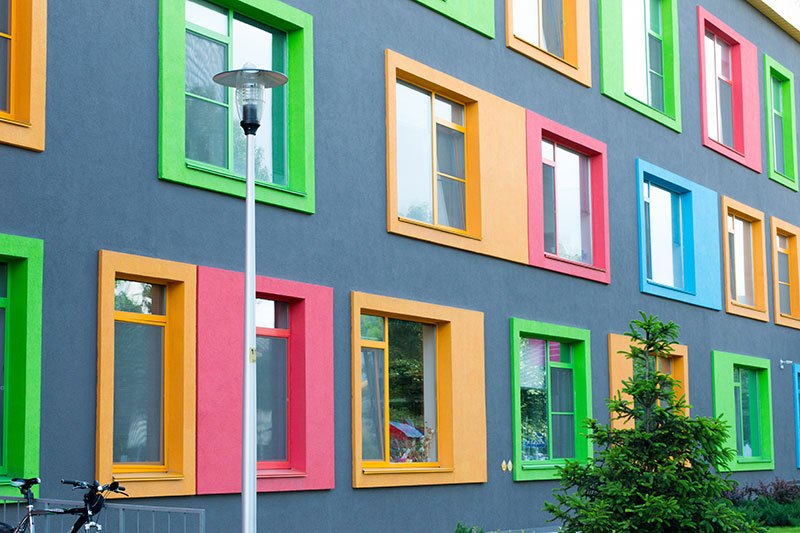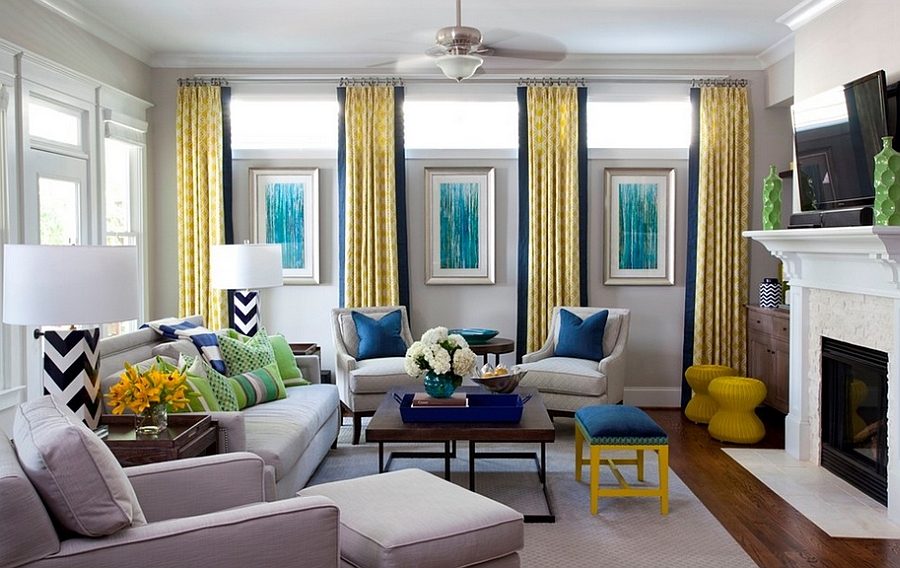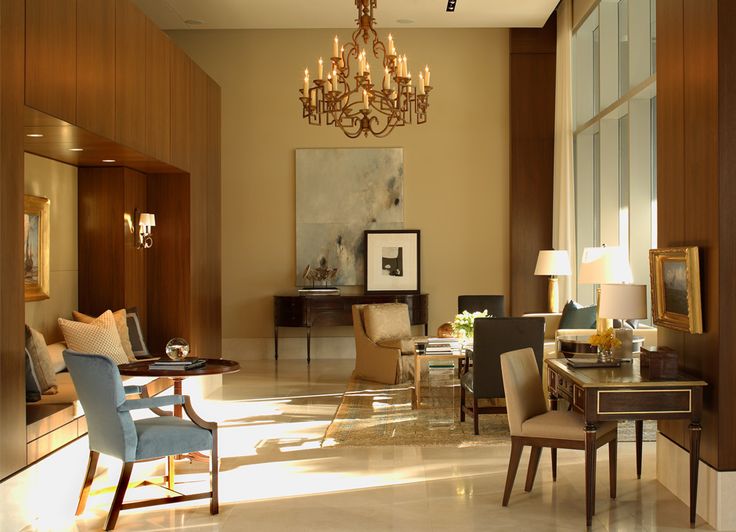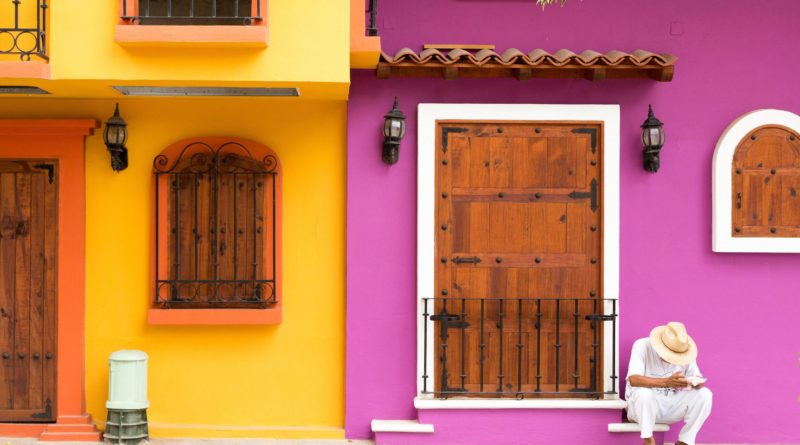PAINT | EFFECTS OF COLOURS | An Architect Explains
Colour has a profound effect on your mood. In clothing, interiors, landscape and even natural light, a colour can change the mood from sad to happy, from confusion to clarity, from fear to confidence. Although not everybody will have the same feelings seeing a certain colour, the psychological effects are shared by the majority. Response to a colour may be influenced by a number of factors such as the body’s need for a specific colour, a sad or happy memory associated with a colour.

When choosing colours for your House, it is best that you make the decision instead of trusting someone else. Since there are hundreds of options in paint colours, it may seem to be a difficult task. But just as you coordinate colours everyday in what you wear, you can choose colours of your choice for your rooms. To help you better, I as an Architect have explained the colours that are commonly used in Interiors along with their effects under the following headings. I have also suggested how they can be used in different rooms in a House.
Effect of Blue colour
Effect of Red colour
Effect of White colour
Effect of Yellow colour
Effect of Violet colour
Effect of Green colour
Effect of Pink colour
Effect of Grey colour
Effect of Orange colour
Effect of Neutral colour
Effect of Pastel colour

EFFECT OF BLUE COLOUR:
Psychologically, blue is associated with tranquility, peace and contentment. This must be because blue reminds you of Nature, the clear sky and pure water. Blue is timeless, linking the present with tradition. However, if used indiscriminately, it can produce strong feelings of melancholia and uneasiness and can be quite depressing.
Blue in Interiors: Blue shades can be used for a restful or a bold effect. Pale blue has a calming effect and gives space to a room and can be used for larger areas. A darker blue will draw things closer and add depth. Blue teams up smartly with browns and whites. So next to a wooden bookshelf, it builds up a striking corner.
EFFECT OF RED COLOUR:
Red is the most dramatic, vital and exciting of the three primaries. Red is warm and welcoming and highly energizing too. It enlightens our mood the moment we look at it. It ignites passion and desire and creates excitement and enthusiasm for life. However too much of red can induce aggression and violence.
Red in Interiors: Red enlivens interior spaces by creating excitement, warmth and elegance and so is used in those areas where one needs excitement like bars. It is less often used in sleeping areas because of its ‘too energizing’ quality. Too much red can distract so it should be used with care in family rooms. However, a splash of red on a wall or a fireplace or a rug creates a dramatic effect. Select a fabric with a cool background colour like grey, blue, or green and a dominant red in the pattern.

EFFECT OF WHITE COLOUR:
White symbolizes purity. There is nothing that reflects natural light better than white. There are innumerable shades of white and is the safest to use when you are confused about choice of colours.
White in Interiors: Snow-white walls and cabinets make a room sparkle. Wood and metal contrast with white and it highlights furnishings. In a stark white room, you can splash any colours of your choice on the curtains and linen and create the colour against a neutral background.
EFFECT OF YELLOW COLOUR:
It is a powerful colour, both light in value and extremely intense in its purest form. It evokes a sense of energy and excitement and stimulates the brain. Yellow is a happy colour and is associated with the Sun. On dull grey days it will cheer you up, make you more mentally alert and enthusiastic. However, too bright yellow can induce restlessness.
Yellow in Interiors: Yellow is a perennial favourite in interior design, combining with greens to provide natural freshness and with red, gaiety and richness. It gives a lift to black and white. It merges effortlessly with pastels, warms to red, and makes wood glow. Rich golds are elegant and used for traditional settings while darker yellows are quieter and cut glare. Dark yellow teams up best with white and contrasts well with green, blue, and brown.

EFFECT OF VIOLET COLOUR:
It seems to be a colour of emotional contrasts. Dark violets induce the impression pof richness and reverence while it’s paler tints are unabashedly romantic, fragile and quite feminine. However too much of violet can cause instability and uneasiness.
Violet in interiors: It was quite popular in the Victorian era and now is once again emerging as a popular choice in Interiors.
EFFECT OF GREEN COLOUR:
Green represents greenery of nature and so generates a feeling of tranquility, peace and coolness in interiors. It is also believed to augment intelligence.
Green in Interiors: Green is the most common choice of designers since it goes with every other colour and thus makes it a natural neutral and a perfect background for any other colour of your choice. Use a bluish green to cool off a room that is too bright or a yellow that leans towards green to warm up a cold room. Whatever you choose, you will get summertime warmth in winter and grassy coolness in summer.

EFFECT OF PINK COLOUR:
Pink is delicate and soft and reflects joy, happiness and pure feelings essential for a happy life. Pink has an interesting quality that seems to halt the body’s ability to stay angry.
Pink in Interiors: Pink blends wonderfully with grays, browns and sharp blues. Because pink is essentially a pastel, it should be used with a stronger colour to highlight its pleasant tone. Pink suggests gaiety and so can be used in a party room.
EFFECT OF BROWN COLOUR:
Earthy and comfortable, brown ranges from the palest of cream-beiges to the deepest of chocolate brown. Browns are associated with ‘mother Earth’ and so impart a sense of warmth and serenity.
Brown in Interiors: Wood furniture, doors, windows provide the brown in a room. Because any brown tone is essentially warm, cool colours should be used as accents.

EFFECT OF GREY COLOUR:
Grey is cool and contemporary. Pale grey pushes walls away to create space. But too much grey can cause melancholy, depression and all the negative moods related to a dull grey day.
Grey In Interiors: Varying in range from a light to medium value, grey is an elegant neutral value for all furnishings. If you like stark contrasts, set off grey against bright tones, whites and blacks. To get a blended background, warm grey with blue, brown, or yellow depending on your color choice.
EFFECT OF ORANGE COLOUR:
Orange color inspires spirituality as it represents transcendence and an otherworldly aspect of life- That’s the reason spiritual people wear saffron robes. It is also very stimulating and has the ability to stimulate appetite, enhance communication, positive feelings, cheerfulness and interaction. But when used excessively, it can induce restlessness.
Orange in Interiors: It is amazingly versatile, emitting great energy in its purest form. As an earth tone, it evokes warmth, comfort and reassurance. Nowadays , the lighter orange , popularly known as peach is used as it gives a cool effect.

EFFECT OF NEUTRAL COLOUR:
Using neutrals does not mean not using colour. Any low intensity colour that is used as a background for other accent colours, features, furniture and objects in a space can be classified as neutrals.
Neutrals in interiors: Neutrals are practical and by changing accessories and fabrics, the look of the space can be dramatically altered against the same neutral background.
EFFECT OF PASTEL COLOURS:
Pastels are simply lighter tints of any hue, white added to red yields pink and light pink is a pastel. There is not any particular definition for a pastel colour but when colours become so light that they almost seem to be white, they are pastels.
Pastels in Interiors: The pastels are becoming more and more popular as they create the most sober and elegant look.

At the end of the day, all colours do have positive as well as negative effects on your mood and the effect strongly depends on how you use the colours (colour contrast and harmony), the combination (colour groups and colour schemes), the purity of the colour, the purpose of the room, the type of people who’re going to use the area, etc.
While this post explains the effects of each colour on people, it is also important to know the different colour groups, and their effects, while selecting the palette for your house:
Related Topics:
- Paint Types
- Paint Glossary
- Paint Colours
- Paint Colour Wheel
- Paint Colour Groups
- Paint Colour Themes
- An Architect’s Painting Guide
- Maintenance Of Painted Surfaces
- Common defects and remedies in painting
- Best Paint Brands In India
If you found this post useful, all it takes is a simple click on the “pin it” “like,” “share,” “tweet,” or Google+ buttons below the post.




